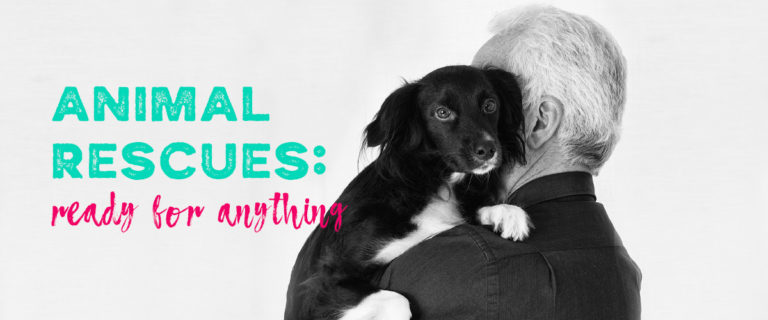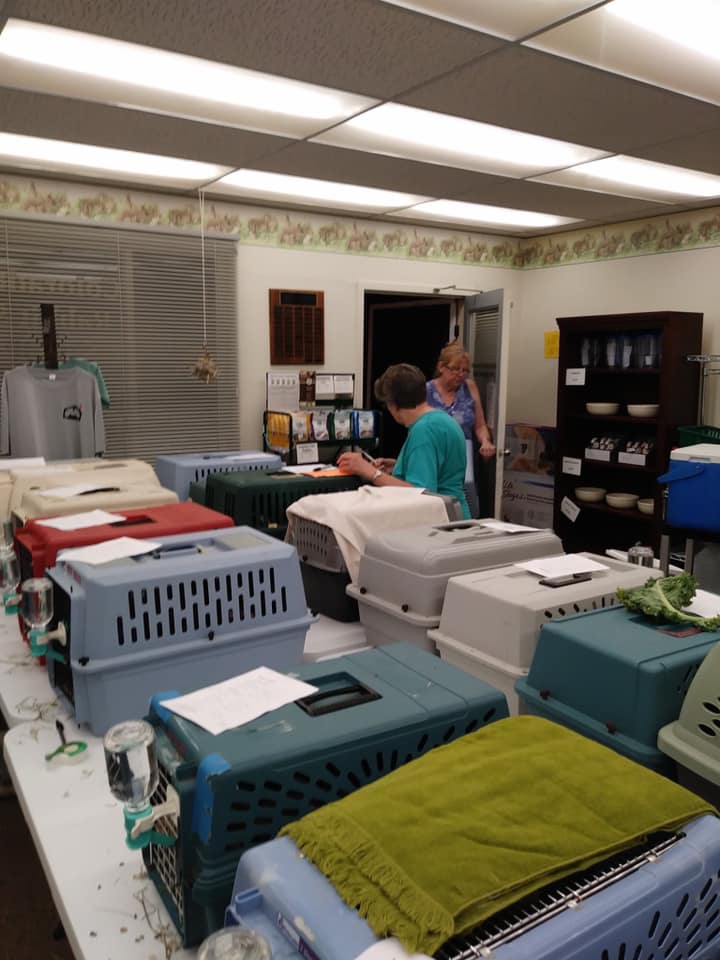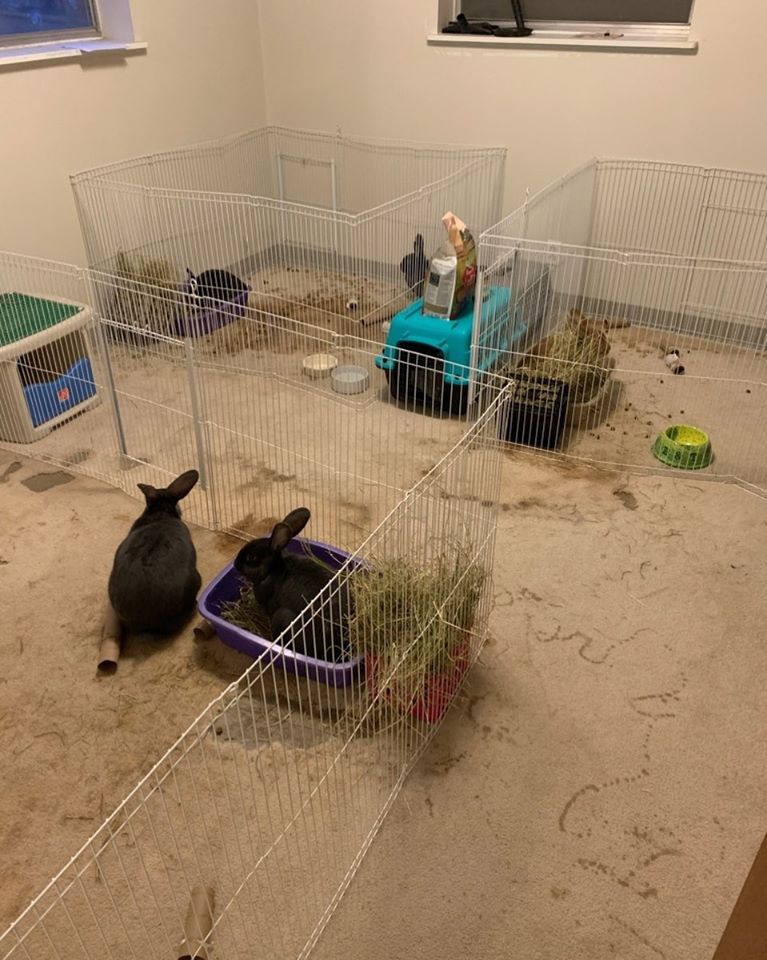Recently, there has been an uptick in disasters and emergencies. During a crisis, it is essential to prepare to help our animal friends and hoomans. The media highlights prep easing hooman suffering. However, animal rescues are ready for anything too. We wanted to share how rescues prepare to help their residents, caregivers, prospective adopters, and families under financial strain.
Did you know many Small Pet Select staff members volunteer in animal rescues and animal welfare organizations? Some of them assisted in the Bunderground Railroad stop at Rocky Mountain House Rabbit Rescue (RMHRR), pictured below. Additionally, many rescues are active in Small Pet Select’s Ambassador program. For more information, you can go here to sign up.
Caring for Residents
- Foster Homes: Animal rescues need tons of help during crisis situations. Regrettably, some animal rescues must close their doors. However, the residents need care, so where do they go? Many such as RMHRR, requested foster homes for about 140 bunnies. In "vacation" homes, the rabbits continue to get the best care possible. Relocating the rabbits also protects the volunteers, i.e., so they don’t have to leave the safety of their own homes to care for the rabbits at the rescue.
RMHRR Foster Bunny "Pawty"
- Requesting donations: If you’re unable to foster or volunteer but want to help ... donate for emergency preparation. Animal rescues need supplies, enrichment items, or money. Be sure to check their websites or social media for their needs. Also, check their guidelines on how and where to donate goods.
Staying Open with Reduced Services
As a community resource, many rescues are open during emergencies. They may adjust or postpone their open hours, services, and events as animal rescues are prepared for anything.
- Stray turn in and relinquishments by appointment: To control intake, animal rescues change to slating appointment times to control animal intake. This facilitates needing less staff on hand at the facility. Those staff can be better utilized in the community.
- Postponing public events. Rescues delay adoption and activities until the emergency ends. This ensures the best staff use. Due to the situation, event attendance may be minimal.
- Flexible adoption procedures: Rescues want to help as many pets as possible, so they complete emergency preparation plans before crises. During emergencies, rescues find ways to continue adoptions. For example, adoptions free up valuable space for strays or surrenders. Also, any training requirements may transition to electronic and online formats, improving adopters and rescue staff's convenience. Furthermore, adoptions may shift to appointment-only.
- Shipping or drop-off points for gift shop orders: Many animal rescues raise funds from in-house gift shops. The shops are open during disasters. Rescues plan to ship the orders to the customer if they can't come by. Also, customers can pick up orders from a convenient location.
Caring for Pawrents in Need
Many animal rescues partner with hooman food banks to help families with pets. Providing pet food allows pets to stay in homes. Families experiencing financial hardship receive emergency food. This reduces the number of pets entering rescues. As we all know, financial difficulties happen at any time. Contact your local food bank to see what supplies you can donate.
The actions described above are just the tip of the iceberg when telling how animal rescues are ready for anything. If you need more ideas, check Best Friends Animal Society’s FAQ page. If you'd like to share your thoughts, please comment on our socials or email hoomans@smallpetselect.com.
DISCLAIMER: These links are being provided as a convenience and for informational purposes only; they do not constitute an endorsement or an approval by Small Pet Select of any of the products, services or opinions of the corporation or organization or individual.
Interested in learning more cool things about your pets? Check out these blogs!
Trust Training Your Rats = Patience, Time, & Treats!
Safe Treats for Chinchillas: What is Good, and What to Avoid
What exactly is E.cuniculi? How do rabbits get it?










